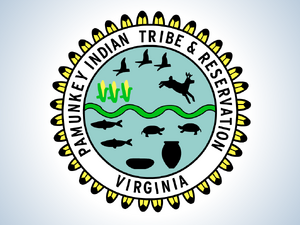| Pocahontas | |||
|---|---|---|---|
 | |||
| Airdate | April 4, 2007 2015 (Update) April 14, 2020 (2nd Update) | ||
| Curriculum | Social Studies | ||
Pocahontas launched in BrainPOP Social Studies April 4, 2007. Over 13 years, an update launched.
Summary[]
Old[]
At the end, Tim mentions C3-PO.
Update[]
Tim walks into a convention center with two robots. Tim answers a letter about pocahontas. Tim and Moby are talking about pocahontas.
At the end, Tim rushes to the elevator and encourages Moby to see him upstairs and offers a high-five to the person standing next to him before the elevator doors close.
Appearances[]
- Tom
- Moby
- Rita (update, cameo)
- Cassie (update, cameo as Chewbacca)
- Little Jimmy (as RD-2D)
- Nat (update, cameo)
Transcript[]
Quiz[]
Trivia[]
- After 10 years, the movie was deleted from Brainpop until April 14, 2020, when it was updated.
- Tim uses his dialogue line "In England, Pocahontas was treated like visiting royalty." in the updated version.
- Little Jimmy's C3PO outfit is similar to the one in the episode, Theme.
Errors[]
- Pocahontas died at only the approximate age of 21, not age 22.
Quotes[]
Old[]
- Tim: No. C3PO was not from Virginia.
Update[]
- Tim: Look, sister, I ain't in this for your revolution, I expect to be well paid! [Moby beeps] I don’t know, I can imagine quite a bit!
- Tim: [as he approaches to the elevator and Moby beeps]
FYI[]
In Depth[]
Originally, the Pamunkey were one of many tribes living in southeast Virginia’s Tidewater area, along the Atlantic coast. But by the early seventeenth century, they’d become one of the most powerful groups in the Powhatan Confederacy. This was a political and military alliance of about 30 tribes brought together by the Pamunkey’s chief, Wahunsenecawh. Born to a royal family, he inherited leadership of a handful of groups. He then added allies through war, marriage, and negotiation.
Back then, the Powhatan spoke an Eastern Algonquian language. The word “Powhatan” itself means “at the waterfalls,” and the Pamunkey village was by the fall line of the James River. Their language died out in the 1700s, as the Powhatan switched to English. But many other tribes along the U.S. east coast spoke a form of Algonquian, including the Mohicans, the Lenape, the Mi’kmaq, and the Abenaki. Some of those are still spoken.
Traditional Powhatan homes are dome-shaped structures made of bent saplings, or young trees. For protection from wind and rain, woven rugs or bark are laid on top. These structures are called yehakins (pictured).
It was common for Pamunkey men and women to decorate their bodies with body paint and tattoos. British Captain John Smith described seeing serpents, beasts, and dotted patterns. We don’t have a visual record of what these decorations looked like. But many experts believe the Pamunkey resembled Algonquin people in North Carolina, who were drawn by British artist John White in the 1580s.
Today, the Pamunkey Indian Reservation sits on about 1,200 acres of ancestral lands outside of Richmond, Virginia. These were granted by treaties with the British in the 1600s. But the federal government did not officially recognize the tribe until 2015.
Arts And Entertainment[]
Many children are introduced to Pocahontas through the 1995 Disney film based on her life. Pocahontas, an animated musical, was the first Disney film based on a true story. It was also the first to feature forest animals who don’t talk and sing… though Pocahontas does spend some time with a talking tree!
The film alters quite a few facts of Pocahontas’s life. Disney depicts Pocahontas as a mature young woman who falls in love with Captain John Smith, which is historically inaccurate. Disney had high hopes for the movie and staged an outdoor premiere in New York City’s Central Park. Around 100,000 people attended!
In fact, what Disney was retelling was the Pocahontas legend. It began as a tale Smith told in a 1624 book. Smith wrote that Pocahontas risked her life to save him from an angry Chief Powhatan. But even Smith admitted that he liked to stretch the truth. And Pocahontas was only 10 years old when they first met, so probably not a factor in her powerful father’s decisions!
Disney’s movie was successful, but it got a mixed response from Native Americans. Some appreciated seeing Powhatan culture positively represented on the big screen, fostering pride in indigenous culture. It featured a strong and opinionated Native American woman. And Pocahontas was even played by a Native woman: Irene Bedard, an Iñupiaq-Cree actress from Anchorage, Alaska. While promoting the movie, Bedard visited Pocahontas’s grave in England, where she offered some tobacco and said a prayer.
But the movie also infuriated some American Indians. Chief Roy Crazy Horse, himself a Powhatan, wrote that the movie “distorts history beyond recognition.” That was true, even if the distortion was 400 years old.
FYI Comic[]
There is none.


